What beetles are pests and how to get rid of them?
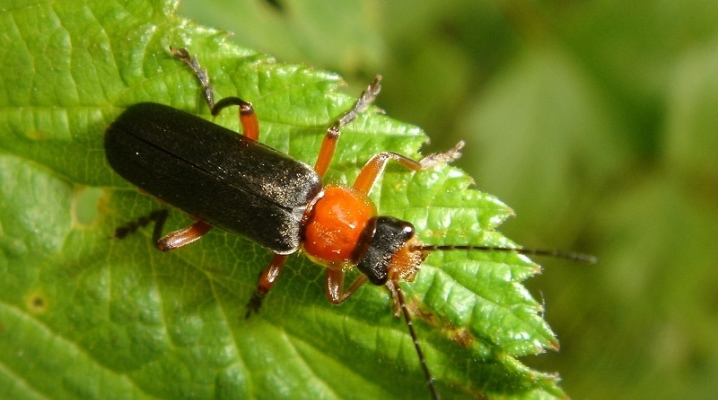
There is a huge variety of different pests that affect cultivated plants, as a result of which they stop growing and may die. Therefore, it is necessary to take timely effective measures aimed at the destruction of insects. These include preventive measures, chemicals and folk ways to get rid of beetles.
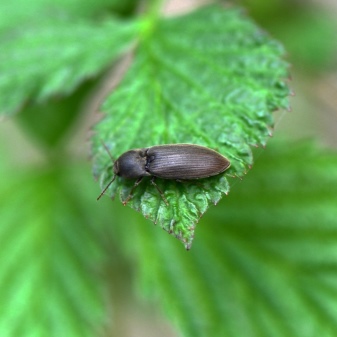

Tree pests
Golden bronze is an insect with iridescent emerald wings. This beetle is a pest that destroys fruit trees and ornamental plantings in the garden. To combat such a pest, you can spray the flowers with cold water in the morning. Then you can shake off the gluttonous beetles on the bedding, and then place them in a jar of kerosene. Another way is to install a switched on lamp near the flower bed to attract insects to the light, and place a container of kerosene under it. Beetles will begin to fall there and die.
However, such methods are effective when a small number of beetles have flown. If they have made a massive raid on plants, you can spray them with an infusion of onions, garlic, horseradish or other herbs to scare off the smell of annoying pests. Plantings should be processed once every 5 days. An effective way to get rid of bronze beetles, gardeners consider an infusion of wood ash, which is prepared by adding a tablespoon of ash for every 5 liters of water. It is necessary to let the solution brew for 2 days.
If you can't fight and the beetles are causing serious damage to the garden, you can resort to using insecticides, which should be sprayed on the soil under the plants. You can use pesticides that are injected into the ground 5 cm deep.
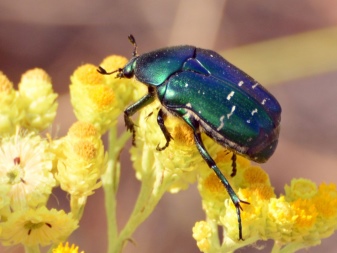
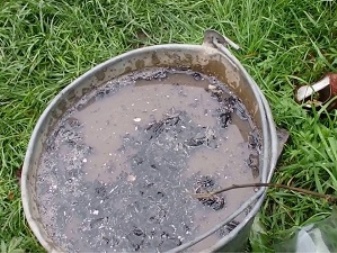
Bronzovka lives in the ground at night, and its larvae hibernate in the same place., therefore, it is recommended to periodically plow the soil and keep the garden clean, because beetles like to hide in rotted leaves. The larvae of pest beetles prefer to feed on wood and make passages in it, thus infecting the tree.
The Khrushchak is small in size and reddish in color. Such insects prefer eating flour crops more, but they can live under the bark of garden trees and in hollows. Coleopteran beetles can destroy wood, causing the tree to die. In the fight against these parasites, natural remedies for repelling beetles in their natural habitat will help. In some cases, the application of chemical insecticides by spraying the bark of trees is required.
The driller is a dangerous pest that parasitizes deciduous trees. The description of the beetle family is presented in the form of a narrow body and weakly chitinized integuments. The driller's larvae go deeper into the wood, create narrow passages, and then pupate. Most of these beetles inhabit dying trees.
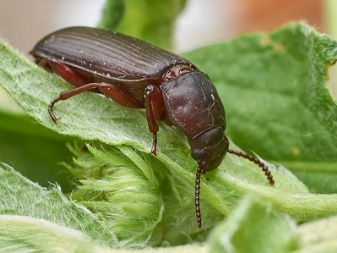
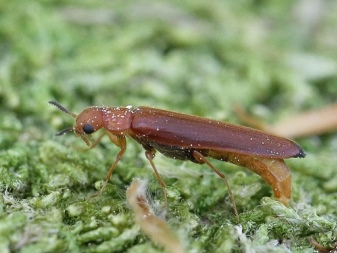
Eating roots
Underground pests feast on the roots. Medvedka is familiar to many gardeners. It can be distinguished by its brownish brown color. A characteristic feature of this pest is the ability to reproduce quickly and is omnivorous. She can easily adapt to the drugs used against her, due to which she becomes almost invulnerable.Medvedka eats not only root crops, but also breaks holes near the shoots of cultivated plants in order to drag them underground. It is very difficult to protect a garden plot from settling a bear, therefore, preventive measures should be taken until the pest population has grown to a huge number. It is recommended to dig up and sift the acquired soil and compost so that the bear does not fall into the beds. Regularly you need to do weeding, destroy cut grass and fallen leaves. If a bear nesting place is found, it must be poured with boiling water.
Soap solution, diluted in a ratio of 200 g of soap to 1 bucket of water, helps perfectly against the bear. By filling the passages and saturating the soil, you can reduce the number of pests. In May, when it is especially active, you should place buckets filled with water-kerosene emulsion, and put a light source nearby. The bear, flying into the light, will fall into a trap and die. You can also spread small piles of manure on the site. Females form a clutch in them, and the gardener will be able to destroy their chosen habitat by stirring up a bunch. And also for the winter, it is recommended to install cans of manure, into which the bears will climb, but will be subject to destruction. If the listed methods do not work, you can place granules of poisonous drugs in the beds, having previously read the instructions for use.
Another common species of underground insects is the wireworm, which is the larva of the click beetle. These orange or brown worms can cause significant damage to landings, while adults are harmless. The favorite delicacy of the wireworm is not only root crops, but also dahlias.
It is difficult to get rid of them, even with the use of strong chemicals. Therefore, it is better to take timely preventive measures so that there is no dominance of dangerous pests.
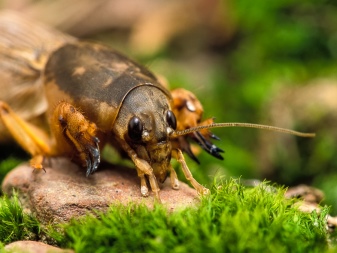
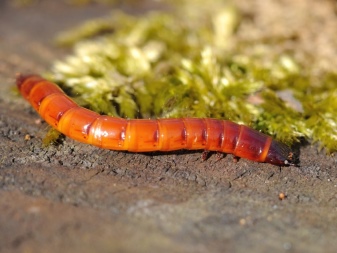
To do this, the soil should be treated with limestone, dig up the grown weeds, remove leaves from the site and do not thicken the crops. Among the natural methods of fighting, it is possible to install bait in the form of sticks with pieces of vegetables put on them to attract worms. Having found individuals trapped in a trap, the summer resident destroys them. And you can also put jars filled with vegetables, where the larvae will take. If their number has become prohibitive, you can treat the soil with chemicals. But in this case, it is not recommended to plant soon on treated soil.
Khrushch, which is the larva of the May beetle, develops in the soil and feeds on roots, roots of shrubs and trees. Plants damaged by larvae become vulnerable to attack by fungi and viruses. If you are wondering how to get rid of this parasite, the answer is that it is almost impossible to destroy their livestock completely, but you can minimize their number. The most labor-intensive way is to collect the May beetles sitting in the trees. And you should also dig up the soil and plant mustard or rape bushes between the rows of beds. Next, mulch the soil with bark, wood shavings or chopped straw, which will make it difficult for the female to enter the ground. If this does not help, you should install a birdhouse on the site that will attract birds that eat pest beetles. In addition, it is recommended to use a special protective agent.
The carrot fly, which has an orange color, prefers to hide in secluded and dark places with high humidity, so it is difficult for a summer resident to detect it. This type of pest damages the rhizomes of plants, and root crops lose their taste. To minimize the harm from carrot flies, you should place the beds in lighted areas, thin and weed them regularly, and plant garlic or onions between the rows.
You can cover the aisles with onion husks, prepare a soap-garlic solution.
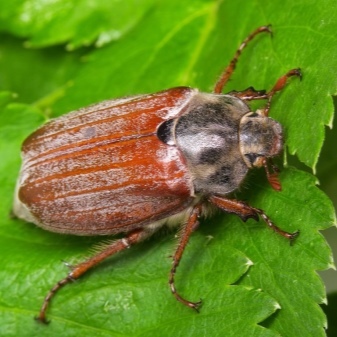
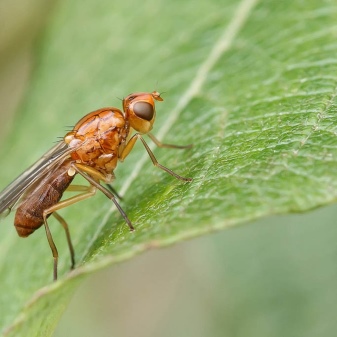
Feeding on bark and wood
The wood grinder beetle is a reddish-brown pest with short, coarse hairs. Infection is determined by visual inspection: the beetle pulls out round holes on the surface of the tree, granules of the formed wood dust appear around. Weevils are mainly woody with a pear-shaped body. They have an elongated head with a proboscis. Their larvae eat the tissues of garden plants. Parasites appear in the bark of wood due to the development of fungal infection. The weevil beetle complicates the structural damage to the infected tree.
The barbel lives in the bark of trees, laying eggs under the bark of newly felled deciduous trees. Wood when parasitized by the barbel beetle requires specified technical characteristics. The bark beetle, painted in a light yellowish brown color, is slightly similar in appearance to the grinder beetle. The larvae of the pest eat elongated tunnels in the sapwood of recently felled coniferous trees. Having pupated, an adult creeps out to the surface, but no longer poses a danger to plants.
Termites, characterized by a white elongated body, have a pair of wings and powerful jaws. The unique ability of termites is to digest plant fibers through symbiosis with other microorganisms. Neomid Antizhuk 100 was recognized as the most effective drug against pest beetles. The chemical is recommended to be used for treating insect-infested wood without affecting its structure. The concentrated composition penetrates into the wood.
And also it will not interfere with the implementation of preventive measures that prevent the appearance of beetles that eat bark and wood.

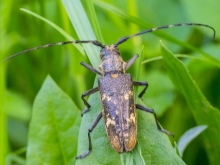
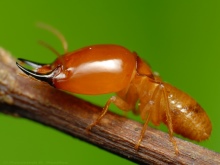
Feeding on buds, leaves and fruits
There are types of pests that are aimed at infecting individual parts of the tree, namely leaves and fruits. The buds of fruit trees and shrubs are susceptible to infection by weevils, golden-tails, hawthorns, caterpillars and other insects. Fruit and leaf buds of cultivated plants are subject to destruction. This threatens a partial loss of yield and a decrease in the fruit bearing of trees.
The hawthorn is presented in the form of a caterpillar of a brownish-gray hue. In the caterpillar stage, the insect causes the greatest damage by its presence to the fruit plant. This type of pest prefers to eat up the buds and young blossoming leaves. Affected leaves gradually die and fall off. Cherry aphids usually infect cherries and cherries. The larvae of this aphid feast on the juice of the blossoming leaves, as a result of which they turn black, curl and lose their vitality. The parasites that have settled on the shoots slow down the growth and development of the plant.
The cherry weevil prefers to settle on stone fruit crops of garden trees. Moreover, harm can be caused not only by the larva, but also by an adult beetle. The larvae like the kernels of the seeds most of all. The green apple aphid usually grows on apple, plum, pear, and a number of other garden plants. The larvae of the harmful insect are light green in color. They drink juice from buds and leaves. Leaves infested with aphids become curled and bumpy. The goldtail also infects fruit trees. These caterpillars have a gray-black fur coat with a hairline covering. By eating parts of plants, they weaken their health.
Acacia false shield spreads on fruit and berry crops. Often brown. Pests can suck out juice from leaves and shoots, and also release honeydew, which contributes to the development of the fungus. The plant dies if gray larvae living on branches and trunks were not destroyed in a timely manner. Coleopteran beetle can be identified by its black-orange body with spots on its wings.Most often in the garden it eats strawberries, raspberries and strawberries. Both the larva and the beetle are dangerous to crops.
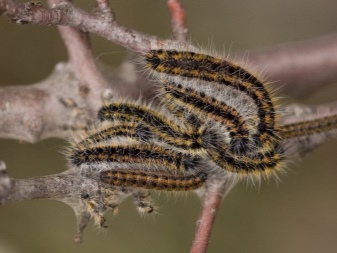

What beetles are harmful in the garden?
The red-breasted beetle gnaws longitudinal holes in the leaves, its larvae parasitize the leaves of agricultural crops, feeding on their pulp. Affected leaves gradually take on a whitish tint. With severe damage, the plant ceases to emasculate. Methods for controlling pests of grain crops consist in organizing early sowing of spring varieties, sowing parasite-resistant breeds, as well as chemical treatment of cereals with insecticides, especially after the larvae leave wintering.
Cucumber pests, which include melon aphids, gall nematodes, cucumber gnats, spider mites and other insects, harm cucumber bushes. If the listed parasites appear, the flowers on the cucumbers begin to crumble, the leaves wrinkle and dry out, the growth of fruits slows down significantly. To control pests on cucumbers, mainly traditional methods are used, in particular, spraying the plant with tincture of garlic, bitter red pepper or celandine broth.
Chemicals are sometimes used to prevent the spread of aphids and other pests, but preventive measures are best. It is necessary to follow the rules of the neighborhood when planting bushes so that nearby trees do not lure with the pleasant smell of dangerous insects. The beans are inhabited by suckers, meadow moths and other polyphagous pests that are most dangerous for the seeds of leguminous crops.
To combat them, various agrotechnical measures and chemical treatment are carried out.
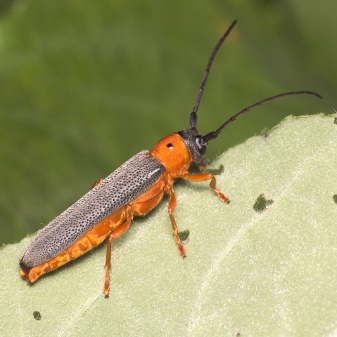
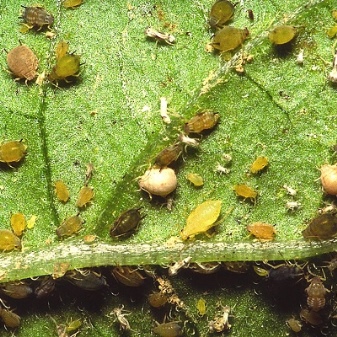
Who is dangerous to flowers?
The squeaky beetle is red, settling on a lily, and feeds on its flowers. The lily beetle has the ability to emit a high-frequency sound in case of danger, and can quickly hide. Alenka shaggy refers to hard-winged pest beetles. She is attracted to flowering bushes of plants, she gnaws at the pistils of flowers. The flower beetle belongs to the family of weevils, inhabits mainly the apple tree, damaging various parts of the flowering fruit tree.
Small beetles, white, feed on juices in the ground of indoor plants. They appear in non-sterile soil, are transmitted from neighboring infected flowers, as well as due to non-compliance with the rules for growing a room culture. As a result, spots appear on the leaves, they curl, the buds wither and fall off. Folk remedies and insecticides can be used against them.

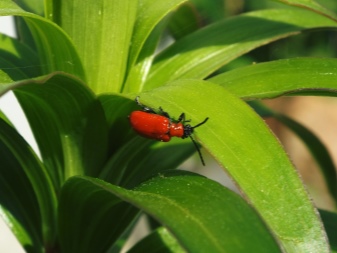
In the next video, you will find an easy way to destroy the bear on your site.













The comment was sent successfully.